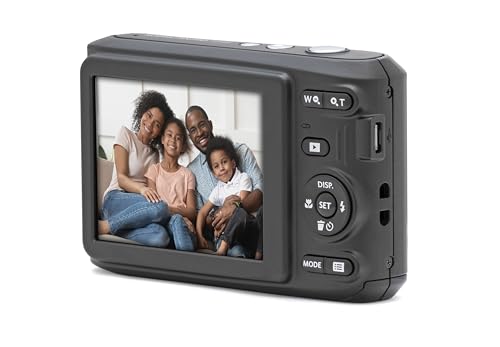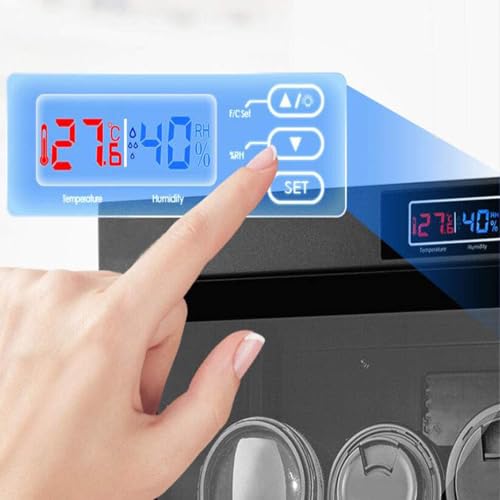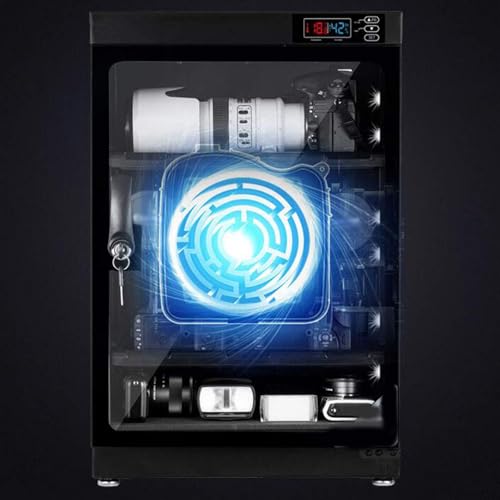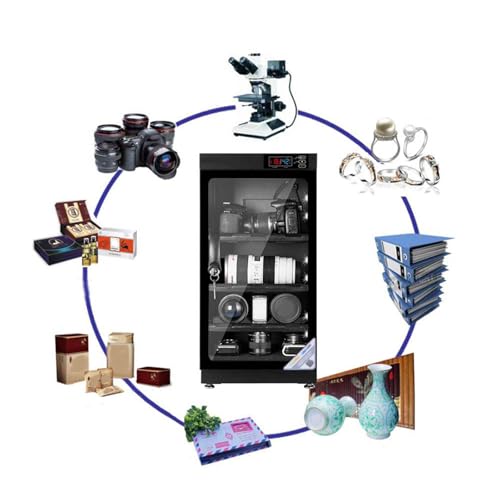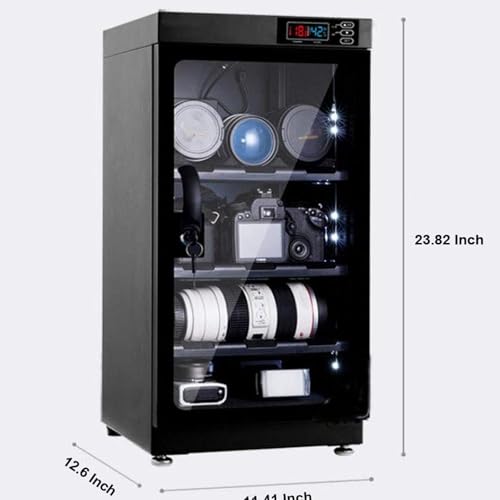


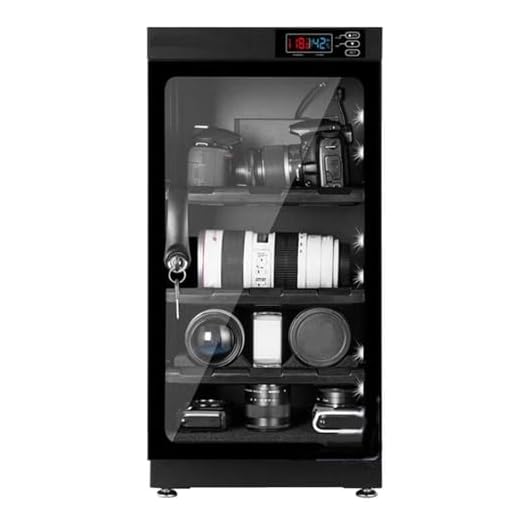

As a professional photographer, I understand the importance of capturing high-quality images. With the advancements in digital camera technology, it is now easier than ever to achieve stunning results. However, one aspect that many amateur photographers overlook is the resolution setting on their cameras. Choosing the right resolution setting can make a significant difference in the final image quality.
Resolution refers to the number of pixels in an image. The more pixels, the higher the resolution, and therefore the better the image quality. When it comes to digital cameras, the resolution setting determines the number of pixels captured by the sensor and ultimately determines the level of detail in the final image. Choosing a high resolution setting can result in sharper images with more detail, but it also means larger file sizes.
So, what is the best resolution setting for a digital camera? It ultimately depends on your needs and how you plan to use the images. If you are capturing images for social media or web use, a lower resolution setting may be sufficient. However, if you plan on printing your images or want to have the flexibility to crop and edit them extensively, a higher resolution setting is recommended.
What is resolution in digital cameras?
A fundamental concept in digital photography is resolution, which refers to the level of detail that a camera sensor can capture. In simple terms, it determines how many pixels are packed into an image, and therefore how clear and sharp the final photo will appear.
Resolution is typically measured in megapixels (MP), which represents one million pixels. Each pixel is a tiny dot of color that combines together to form the complete image. The more megapixels a camera has, the more detail it can capture, resulting in higher-quality photos.
When it comes to digital cameras, resolution plays a crucial role in determining the overall image quality. A higher resolution can result in sharper images and the ability to print larger photos without losing clarity. However, it’s important to note that a higher resolution doesn’t always guarantee better image quality, as other factors such as lens quality, sensor size, and image processing also come into play.
The resolution also affects the file size of each photo. Higher-resolution images require more storage space and may take longer to process, both on the camera and when transferring to a computer or other devices.
Choosing the right resolution for your digital camera depends on your specific needs and preferences. If you’re primarily sharing photos online or printing small-sized images, a lower-resolution camera may be sufficient. On the other hand, if you’re a professional photographer or frequently print large-sized photos, a camera with a higher resolution would be more suitable.
In conclusion, resolution is a key factor to consider when purchasing a digital camera. It determines the level of detail and clarity in your photos and affects the file size of each image. Finding the right balance between resolution and other camera specifications is essential to capturing high-quality photographs.
Understanding the concept of resolution
In the world of digital cameras, resolution is a crucial concept to grasp. Resolution refers to the amount of detail captured in an image by the camera sensor. It is measured in pixels, and a higher resolution means more pixels are packed into the image, resulting in a sharper and more detailed photo. Understanding resolution is essential for photographers as it directly affects the quality and clarity of their images.
When it comes to digital cameras, two main types of resolution need to be considered: sensor resolution and output resolution. Sensor resolution refers to the number of pixels that the camera’s image sensor can capture. Higher sensor resolution enables the camera to capture more detail and produce larger images without losing quality. Output resolution, on the other hand, is the number of pixels in the final image produced by the camera. This can vary depending on the settings chosen by the photographer.
Sensor resolution plays a crucial role in determining the overall quality of the image. A camera with a higher sensor resolution will generally produce sharper and more detailed images compared to one with a lower resolution. This is particularly important when aiming for large prints or when post-processing the images, as it allows for more flexibility and better results. A higher sensor resolution also provides the opportunity to crop or zoom in on an image without losing too much detail.
Output resolution, on the other hand, is dependent on the specific needs of the photographer. If the images are intended for web use or viewing on screens, a lower output resolution may be sufficient as screens have limited pixel density. However, if the intention is to print the images or use them for professional purposes, a higher output resolution is essential to ensure the best possible quality and clarity.
How resolution affects image quality
When it comes to digital cameras, resolution plays a crucial role in determining the quality of the images captured. Resolution refers to the number of pixels that make up an image, and it directly affects the level of detail and sharpness in the final result.
A higher resolution means that more pixels are packed into the image, resulting in a higher level of detail and clarity. This is particularly important when it comes to printing or enlarging the images, as a higher resolution allows for greater flexibility in terms of size and cropping without sacrificing quality. Having a higher resolution also ensures that the nuances and finer elements in the scene are captured accurately, resulting in a more realistic and engaging image.
On the other hand, a lower resolution may lead to a loss of detail and sharpness, especially when images are viewed on larger screens or printed in larger sizes. Smaller resolution images may appear pixelated or blurry, as the individual pixels become more visible. However, lower resolution images also have their advantages. They typically take up less storage space, process faster, and are easier to upload and share online or via email.
The optimal resolution setting depends on the intended use and output of the images.
For professional photographers or those who prioritize high-quality prints and large displays, it is recommended to use the highest resolution setting available on the camera. This ensures that no details are lost and provides the freedom to crop and adjust the images during post-processing without compromising on the final image quality.
For casual photographers or those who primarily share their images digitally, a lower resolution setting may be sufficient. This allows for faster processing and easier sharing while still maintaining a decent level of image quality. It is essential to strike a balance between resolution and desired output to make the most of the camera’s capabilities and achieve the best possible image quality for each situation.
Factors to consider when choosing the best resolution setting
When selecting the best resolution setting for your digital camera, there are several factors to consider that can help you make an informed decision. These factors can greatly impact the quality and usability of your photographs, so it is important to choose wisely.
-
Intended Use: The first factor to consider is how you plan to use the photos. If you are taking pictures for social media or online sharing, a lower resolution may be sufficient. However, if you plan to print your photos or want to have the option to enlarge them later, a higher resolution setting would be more suitable.
-
Storage Space: Another important factor to consider is the available storage space on your camera or memory card. Higher resolution photos take up more space, so if you have limited storage capacity, you may want to choose a lower resolution setting to maximize the number of photos you can capture.
-
Subject and Detail: The subject and level of detail you want to capture can also influence your resolution selection. If your subject has intricate details or you want to capture fine textures, a higher resolution can help ensure those details are preserved. On the other hand, if your subject is simple or the details are not as important, a lower resolution may suffice.
-
Processing Power: Consider the capabilities of your camera’s processing power and the speed at which it can write files to the memory card. Some cameras may struggle to handle the large file sizes associated with higher resolution photos, resulting in slower performance and potential delays. It is important to ensure that your camera can handle the selected resolution setting without compromising overall functionality.
By taking these factors into account, you can make an informed decision when choosing the best resolution setting for your digital camera. Ultimately, it is important to find the balance between capturing high-quality photos and managing your storage capacity and processing capabilities.
Camera sensor size and resolution
When it comes to digital cameras, one important factor that determines the image quality is the camera sensor size. The larger the sensor size, the more light it can capture, resulting in better image quality, especially in low-light conditions. The resolution of a camera, on the other hand, refers to the number of pixels in the image. It determines the level of detail and sharpness in the photos.
Camera sensors come in various sizes, and each size has its own advantages and disadvantages. Full-frame sensors, which are the largest, offer the highest image quality and low-light performance. They are typically found in professional cameras and produce stunningly detailed images. APS-C sensors, on the other hand, are smaller and commonly used in consumer-level cameras. They still offer good image quality but may have limitations in low-light conditions compared to full-frame sensors.
In terms of resolution, higher megapixel counts do not always guarantee better image quality. While more pixels can result in sharper details, a higher resolution can also lead to larger file sizes. This may impact the camera’s performance, especially during continuous shooting or when transferring files. It’s essential to consider your intended use for the images before selecting a resolution. If you plan to print large posters or crop images extensively, a higher resolution camera may be beneficial. However, for everyday photography and sharing images online, a moderate resolution should be sufficient.
In conclusion, when choosing a camera, it’s important to consider both the sensor size and the resolution. A larger sensor size will generally offer better image quality, especially in low-light conditions. However, the resolution should be selected based on the intended use of the images to ensure optimal performance and file size management.
Shooting conditions and intended use of the photos
When it comes to determining the best resolution setting for a digital camera, it is important to consider the shooting conditions and the intended use of the photos. Different shooting conditions require different levels of detail and image quality, and the intended use of the photos also plays a significant role in determining the appropriate resolution setting.
If you are shooting in well-lit conditions with lots of natural light, a higher resolution setting can be beneficial. This will allow you to capture finer details and produce high-quality images. On the other hand, if you are shooting in low-light conditions or situations where you don’t have control over the lighting, a lower resolution setting may be more appropriate. This can help reduce noise and produce cleaner images.
Furthermore, the intended use of the photos should also be considered. If you are planning to print the photos or use them for professional purposes, a higher resolution setting is recommended. This will ensure that the images can be enlarged without losing quality and that they will look sharp and professional. However, if you are only planning to share the photos on social media or view them on a computer screen, a lower resolution setting may be sufficient.
In conclusion, the shooting conditions and the intended use of the photos are important factors to consider when selecting the resolution setting for a digital camera. By taking these factors into account, you can ensure that your photos meet the desired level of detail and image quality for your specific needs.
Storage capacity and file size considerations
When it comes to choosing the best resolution setting for a digital camera, it’s important to consider the storage capacity and file size of the images. The resolution setting determines the level of detail captured in each photo, but it also affects the file size. This can have implications for storage space on your memory card or hard drive, as well as the speed at which you can transfer and manipulate the files.
Storage capacity: The higher the resolution setting, the larger the file size of each image. If you frequently take photos at the highest resolution setting, you may find that your memory card fills up quickly. It’s important to consider the storage capacity of your memory card and plan accordingly. Investing in a higher-capacity card or carrying multiple cards can help ensure you have enough space to capture all the photos you want without having to constantly delete or transfer files.
File size: The file size of an image is determined by the resolution setting and the level of compression applied by the camera. Higher resolution images with less compression will result in larger file sizes. This is something to keep in mind if you have limited storage space, as larger file sizes will fill up your memory card or hard drive more quickly. On the other hand, lower resolution images with higher compression may sacrifice some level of detail, so it’s important to find the right balance for your needs.
Overall, finding the best resolution setting for your digital camera involves considering your storage capacity and file size considerations. It’s important to strike a balance between capturing high-quality images and managing your storage space effectively.
Recommended Resolution Settings for Different Photography Needs
As a photographer, it is important to understand the different resolution settings available on your digital camera in order to capture images that meet your specific needs. Here are some recommended resolution settings for different photography situations:
1. Landscape Photography
When capturing the vast and intricate details of a landscape, it is important to use a high resolution setting to ensure every nuance is preserved. In this case, I recommend setting your camera to the highest resolution available, such as 24 megapixels or more. This will allow you to capture fine details and create large prints without losing image quality.
2. Portrait Photography
When photographing people, it is important to focus on capturing the subject’s expression and emotion. In this case, a medium resolution setting is often sufficient. I recommend setting your camera to around 12-16 megapixels. This will provide enough resolution to capture the details of the face and create beautiful prints without creating unnecessarily large file sizes.
3. Sports Photography
When capturing fast-moving subjects, such as athletes or wildlife, it is important to use a high-speed setting on your camera. This can result in slightly lower resolution images, but it allows you to capture the action without any blurriness. I recommend setting your camera to a resolution of around 8-12 megapixels, depending on the capabilities of your camera.
4. Social Media and Online Sharing
When capturing images to share on social media platforms or online galleries, it is not necessary to use the highest resolution settings. In fact, using a lower resolution can be beneficial in terms of faster file uploads and reduced storage space. I recommend setting your camera to a resolution of around 6-8 megapixels for optimal online sharing.
- For landscape photography, use a high resolution setting (e.g., 24 megapixels or more) to capture fine details.
- For portrait photography, a medium resolution setting (around 12-16 megapixels) is often sufficient to capture facial details.
- For sports photography, use a high-speed setting (around 8-12 megapixels) to capture fast-moving subjects without blurriness.
- For social media and online sharing, use a lower resolution setting (around 6-8 megapixels) to optimize file uploads and reduce storage space.
By understanding the recommended resolution settings for different photography needs, you can make the most of your digital camera and ensure that your images meet your specific requirements.
High-resolution settings for professional photography and printing
As a professional photographer, the quality of my images is of utmost importance. To ensure the highest level of detail, clarity, and sharpness in my photos, I always use the highest resolution settings on my digital camera. This allows me to capture every intricate detail and produce stunning images that truly capture the essence of my subjects.
When it comes to printing my photos, having a high resolution is crucial. By shooting in a high resolution, I have the flexibility to print my images in large sizes without sacrificing quality. Whether it’s a fine art print, a magazine spread, or a billboard advertisement, the high resolution ensures that every detail is preserved and the final print looks professional and visually appealing.
Using high resolution settings also provides me with more flexibility during post-processing. With more pixels to work with, I can crop the image, adjust composition, and make other edits without compromising quality. This is particularly useful when shooting in challenging conditions or when I want to experiment with different creative ideas in post-production.
It’s worth noting that shooting in high resolution does require more storage space, as the image files are larger. However, with advancements in technology, storage solutions have become more affordable and accessible, making it easier for professionals to handle larger file sizes.
In conclusion, using high-resolution settings on my digital camera is essential for professional photography and printing. It allows me to capture the finest details, create stunning prints, and have more flexibility in post-processing. Despite the larger file sizes, the benefits far outweigh the storage considerations. So, if you’re serious about photography, I highly recommend shooting in high resolution.
Medium-resolution settings for everyday photography
When it comes to capturing everyday moments with a digital camera, finding the right resolution settings can make a big difference. As an avid photographer, I have experimented with various resolution options and have found that medium-resolution settings offer the perfect balance between image quality and file size.
One of the main advantages of using medium-resolution settings is that it allows me to capture a good amount of detail without sacrificing too much storage space. With higher resolution settings, the file sizes can quickly become enormous, making it more difficult to store and manage my photos. Medium-resolution settings strike the right balance, allowing me to have clear and detailed images while still keeping file sizes manageable.
Another benefit of shooting in medium resolution is the versatility it offers. Whether I want to upload photos to social media, print them, or simply view them on my computer, medium resolution provides me with sufficient quality in all scenarios. It allows me to share my images easily without the need for additional compression or resizing.
In addition, shooting in medium resolution also helps to reduce processing time. Higher resolution files require more time to transfer, edit, and process. By using medium-resolution settings, I can streamline my photography workflow and spend more time focusing on capturing great shots, rather than waiting for files to load or process.
In conclusion, medium-resolution settings offer a practical solution for everyday photography. They provide a balance between image quality and file size, ensuring that photos are clear and detailed while remaining easy to store, manage, and share. So, if you are looking for an optimal resolution setting for everyday use, give medium resolution a try and see the difference it can make in your photography endeavors.
Low-resolution settings for web and social media sharing
In today’s digital age, where sharing photos on the web and social media platforms has become a norm, it is essential to understand the best resolution settings to use for optimal online sharing. By using low resolution settings, you can ensure faster upload times, conserve storage space, and maintain image quality suitable for digital platforms.
Choose the right file format:
When sharing photos online, it is recommended to use the JPEG format. JPEG is a compressed file format that reduces the file size without significantly compromising image quality. This format is widely supported across various web and social media platforms.
Select an appropriate resolution:
The resolution for web and social media sharing typically ranges from 72 to 96 pixels per inch (ppi). This resolution ensures a good display quality on digital screens while keeping the file size manageable. Most digital cameras offer preset options for web and social media sharing, which automatically adjust the resolution accordingly.
Consider aspect ratio:
When sharing photos on social media platforms, it is important to consider the aspect ratio, which is the proportional relationship between the width and height of an image. Different platforms have varying requirements for aspect ratios, so it’s essential to choose a resolution that maintains the desired aspect ratio without distorting the image or cropping out important details.
Use image editing software:
If your camera does not have built-in low-resolution settings for web and social media sharing, you can make use of image editing software to resize and optimize your photos. Programs like Adobe Photoshop and GIMP allow you to easily adjust the resolution, file size, and aspect ratio of your images while preserving the overall quality.
| Step | Action |
|---|---|
| 1 | Choose the JPEG file format for online sharing. |
| 2 | Select a resolution of 72-96 pixels per inch (ppi). |
| 3 | Consider the aspect ratio to maintain the desired composition. |
| 4 | Use image editing software to resize and optimize your photos if necessary. |
By following these guidelines and adjusting the resolution settings accordingly, you can easily share your photos on the web and social media platforms without sacrificing image quality or facing lengthy upload times.
Best resolution setting for digital camera
Features
| Model | W08 |
| Color | YL15-W08-C-Black |
| Is Adult Product |
Features
| Part Number | FZ45BK |
| Model | FZ45BK |
| Warranty | Limited 1-Year Warranty |
| Color | Black |
| Release Date | 2022-10-03T00:00:01Z |
| Price history for KODAK 16MP Digital Camera with Zoom | |
|---|---|
|
Latest updates:
|
|
Features
| Part Number | T154017FBA |
| Model | Camera Dry Cabinet |
| Color | Black |
| Price history for INTBUYING Camera Storage Dry Box | |
|---|---|
|
Latest updates:
|
|
Features
| Part Number | 5331C016 |
| Model | 5331C016 |
| Warranty | 1 year manufacturer |
| Color | Black |
| Release Date | 2022-07-28T00:00:01Z |
| Language | English |
| Price history for Canon EOS R10 Mirrorless Camera Kit | |
|---|---|
|
Latest updates:
|
|
Question and answers:
What is the best resolution setting for a digital camera?
The best resolution setting for a digital camera depends on your specific needs. If you want to capture high-quality photos and have enough storage space, it is recommended to set your camera to its highest resolution setting. This will allow you to capture images with maximum detail and resolution. However, if you are limited on storage space or plan to share your photos online, you can choose a lower resolution setting that still provides good quality but saves space.
How does the resolution setting affect the image quality of a digital camera?
The resolution setting of a digital camera directly affects the image quality. Higher resolution settings produce images with more detail and clarity, as they capture a greater number of pixels. This is particularly beneficial for printing large-sized photos or cropping images without losing significant detail. Conversely, lower resolution settings may result in photos with less detail, but they also require less storage space and can be easier to share or upload online. It is important to find the right balance based on your specific needs.







